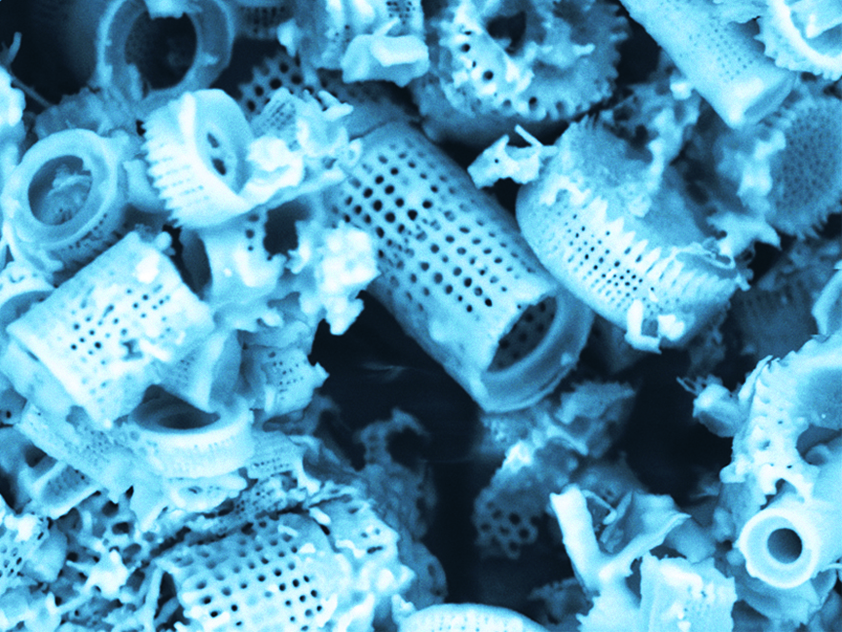Diamaceous. Diamotaceous. Dy-ma-may-shus. Dytomacious. Dimaceous. Deatomayceous. Dymacious.
Just what on Earth are we talking about?
Here at Absorbent Products’ British Columbia head office, we have heard just about every variation of ‘diatomaceous earth’ from folks throughout North America. It seems rather counterintuitive that such a simple substance should have such a complicated name. No wonder it’s so commonly referred to by its easiest form – ‘DE’!
The proper term is diatomaceous, pronounced “DI-a-tom-AY-shus”. The origin of the word is straightforward. The first part, “diatom”, is the name of the single-celled algae whose billions of skeletal remains forms the product. The second part, “-aceous”, is a Latin-derived suffix meaning “belonging to”, or “of the nature of”.
DE was identified in Germany in the 1830s, but it has been used by humans for various purposes for centuries. With such a long history, DE has become known by several different names, including:
Kieselgur (or kieselguhr) – the original term in German for DE, this is derived from kieselalgen, German for ‘diatoms’.
Diatomite – specifically, this is diatomaceous earth that has been lithified, or turned into sedimentary rock. Diatomite can be milled into many different particle sizes of DE, from chunky cat litter to insecticidal powder.
Fossil shell flour and dinosaur dust – like fossils or amber, DE is the product of creatures that lived and died millions of years ago.
Silica, also known as silicon dioxide – often used when referring to pure DE. Silica (chemical formula SiO2) is the main component in the algal skeletons that make up the DE. Silica is also an abundant compound in Earth’s crust, and an essential life-building block for most organisms.
No matter how you refer to it, or how you pronounce it, diatomaceous earth has many benefits and uses in pest control, agriculture, animal feed, pet care, and in industrial applications. You can see and learn more about our complete line of DE products at www.absorbentproducts.com
Menu
Close
- Home
- About
- Sectors
Specialists in customizing products
Through toll processing services and private labelling, we’ve custom-made products for many of the biggest names in the industry.

- PozGlass
- Products
- Media
- Investors
Latest Investor News
Progressive Planet provides shareholder update and announces entry into lightweight litter market
10 July, 2025Kamloops, BC – July 10, 2025 – Progressive Planet (TSXV: PLAN) (OTCQB: ASHXF) (“Progressive Planet”,...
- Home
- About
- Sectors
Specialists in customizing products
Through toll processing services and private labelling, we’ve custom-made products for many of the biggest names in the industry.

- PozGlass
- Products
- Media
- Investors
Latest Investor News
Progressive Planet provides shareholder update and announces entry into lightweight litter market
10 July, 2025Kamloops, BC – July 10, 2025 – Progressive Planet (TSXV: PLAN) (OTCQB: ASHXF) (“Progressive Planet”,...


